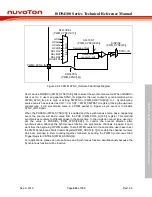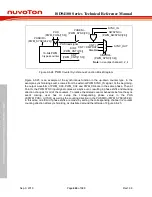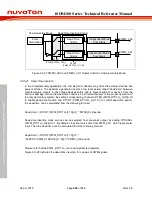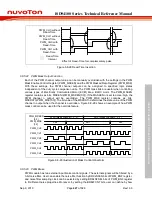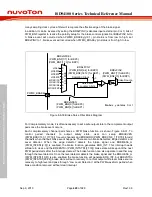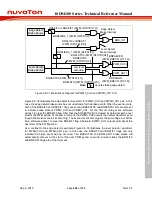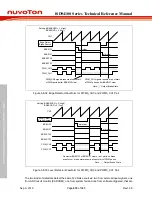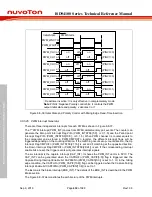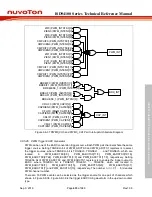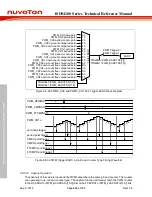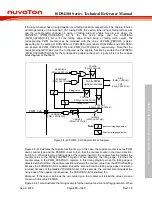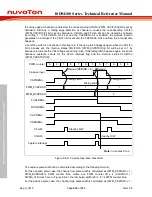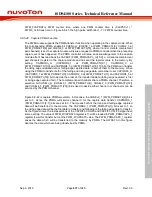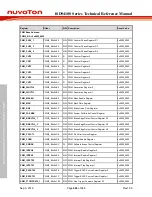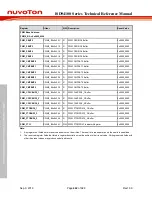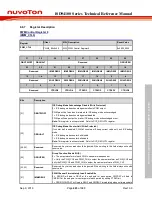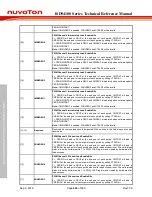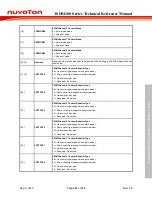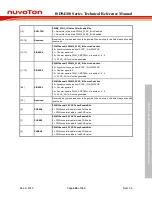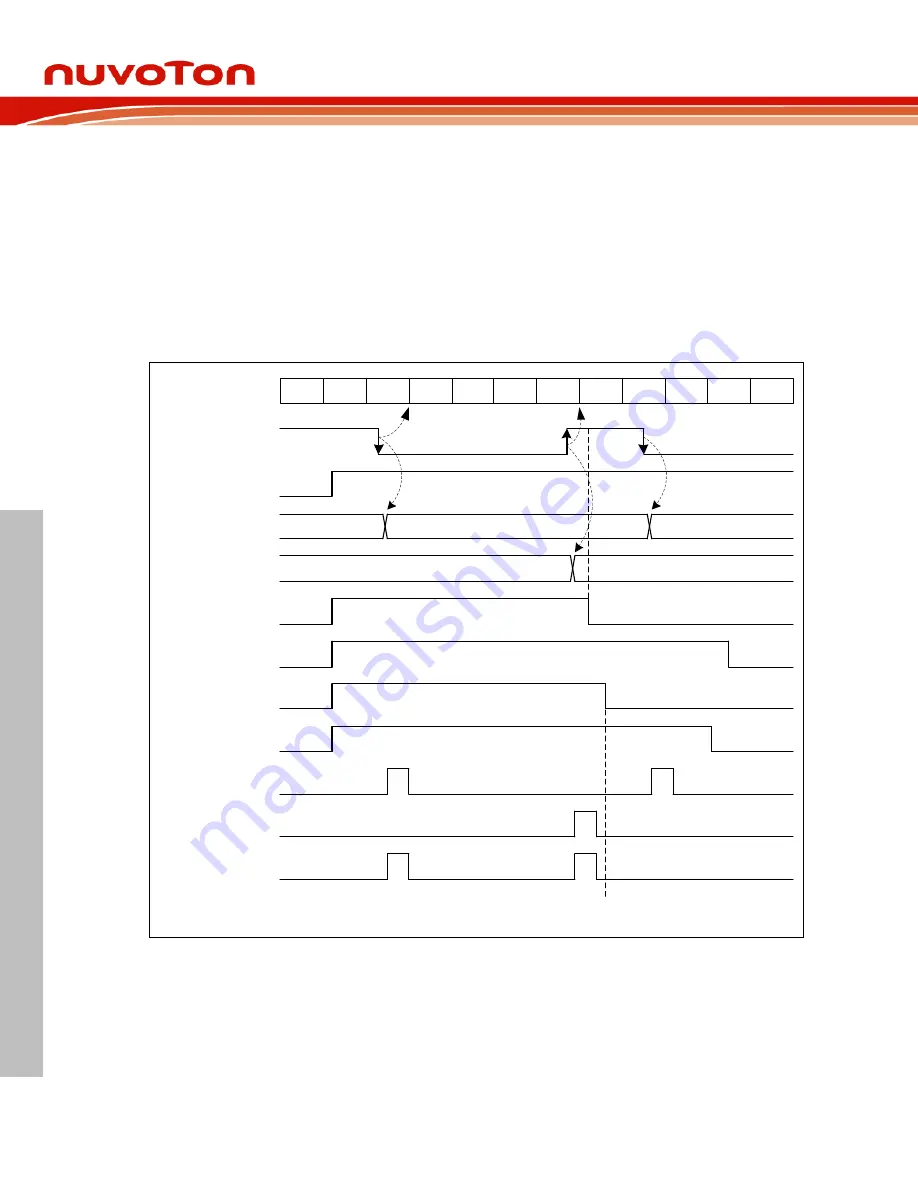
ISD94100 Series Technical Reference Manual
Sep 9, 2019
Page
436
of 928
Rev1.09
IS
D
9
410
0
S
ER
IE
S
T
E
C
HN
ICA
L
RE
F
E
RE
NCE
M
AN
U
AL
the rising edge at channel n is detected, the corresponding CRLIFn (PWM_CAPIF[5:0]) bit is set by
hardware. Similarly, a falling edge detection at channel n causes the corresponding CFLIFn
(PWM_CAPIF[13:8]) bit is set by hardware. CRLIFn and CFLIFn bits can be cleared by software
by writing ‘1’. If the CRLIFn bit is set and the CAPRIENn bit is enabled, the capture function
generates an interrupt. If the CFLIFn bit is set and the CAPFIENn bit is enabled, the interrupt also
happens.
A condition which is not shown in this figure is: if the rising latch happens again when the CRLIFn
bit is already set, the Overrun status CRLIFOVn (PWM_CAPSTS[5:0]) bit will be set to 1 by
hardware to indicate the CRLIF flag overrunning. Also, if the falling latch happens again, the same
hardware operation occurs for the CFLIF interrupt flag and the Overrun status CFLIFOVn
(PWM_CAPSTS[13:8]).
Note:
n denotes 0 to 5
8
7
6
5
4
3
2
1
8
7
6
5
PWM counter
1
7
Capture Input
PWM_FCAPDATn
5
PWM_RCAPDATn
Capture interrupt
CAPFIENn
CAPRIENn
CAPINENn
Clear by S/W
CFLIFn
CRLIFn
Reload (PERIOD = 8)
Reload
Clear by S/W
Falling Latch
Falling Latch
Rising Latch
FCRLDENn
RCRLDENn
Figure 6.8-41 Capture Operation Waveform
The capture pulse width can be calculated according to the following formula:
For the negative pulse case, the channel low pulse width is calculated as (PWM_P 1 -
PWM_RCAPDATn) PWM counter time, where one PWM counter time is (1) *
PWM0_CLK clock time. In Figure 6.8-41, the low pulse width is 8+1-5 = 4 PWM counter time.
For the positive pulse case, the channel high pulse width is calculated as (PWM_P 1 -


